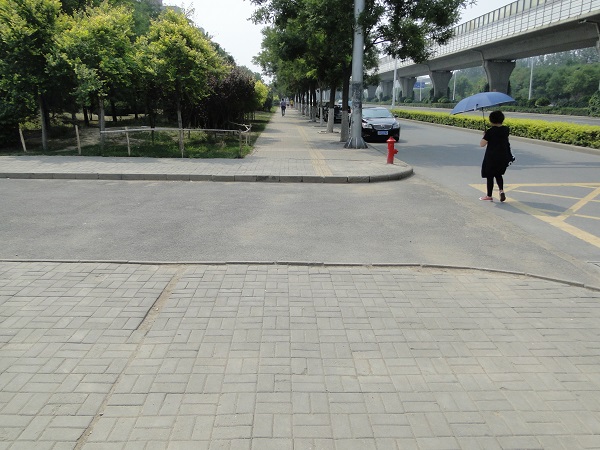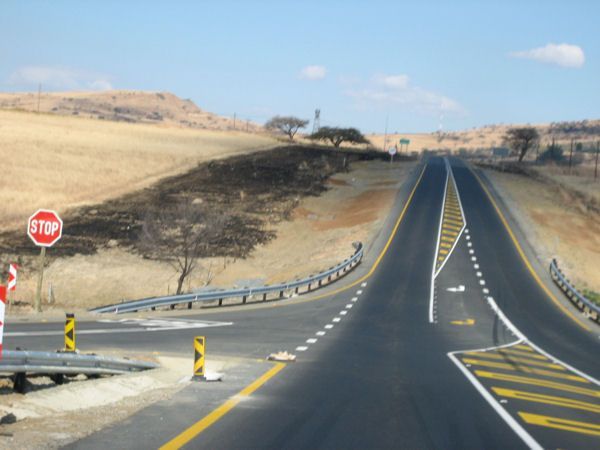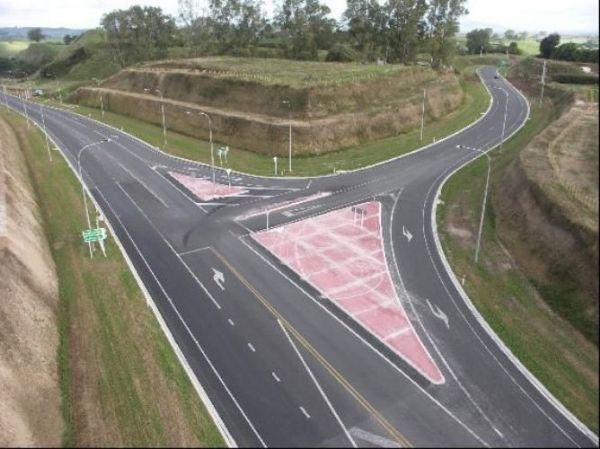





Intersections - Turn Lanes (Unsignalised)
Dedicated turn lanes allow vehicles to slow down to turn without effecting the flow of through traffic. This reduces the risk of rear-end crashes.
Unsignalised intersections turn lanes also provide a safe place for turning drivers to wait for a gap in the opposing traffic. This reduces the risk of a crash between the turning vehicle and opposing through vehicles.
Cross-traffic turn lanes sheltered by a median provide better separation from the opposing traffic stream but turn lanes can be also created with line marking. Sometimes the road can be made wider to fit the turn lane by sealing the shoulder or by taking parking space. Sometimes road carriageway widening is required.
Turn lanes are often beneficial for existing road junctions, even if the layout is sub-standard and narrower lane widths are used. They are also desirable where intersections are located on bends where visibility is constrained.
- Reduced rear-end and sideswipe crashes.
- Reduced loss of control while turning crashes.
- Improved traffic flow.
- Increased intersection capacity.
- Painted turn lanes must be clearly delineated and have good sight distance.
- The layout of turn lanes should be relatively simple and easily understood by drivers.
- Unsignalised turn lanes on divided roads should only be used with caution due to increased potential for conflict, and typically high traffic speed on these roads.
- Median widening should be considered at intersections to facilitate traffic for the minor road turning onto the main road in two steps. The increased width will need to accord with the type of vehicles needing to wait.at the median while completing the turning manoeuver.
- Turn lanes should be long enough to allow a vehicle time to stop within it (clear of through traffic).
- If a turn lane is too long, through drivers may enter the lane by mistake.
- Signs at the start of the turning lane may help prevent this.
- Installing turn lanes can increase the width of the intersection and cause problems for pedestrians trying to cross. One solution is to provide a pedestrian refuge island in the median.
The Star Rating Demonstrator is a freely available tool with the iRAP online software, ViDA. With the Star Rating Demonstrator, it is possible to explore the impact that this Safer Roads Treatment has on risk.
Treatment Summary
Costs | Low to medium |
Treatment life | 5 years - 10 years |
Potential casualty reduction | 10-25% |
Case Studies
Related Images
 A property access point in China. Image credit: Greg Smith
A property access point in China. Image credit: Greg Smith A right turn lane at a 3-leg unsignalised intersection. Image credit: Steve Lawson
A right turn lane at a 3-leg unsignalised intersection. Image credit: Steve Lawson An upgraded intersection with protected turn lane, involving horizontal and vertical realignment. Image credit: ARRB Group
An upgraded intersection with protected turn lane, involving horizontal and vertical realignment. Image credit: ARRB Group










